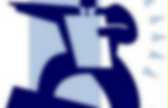

Assessment. WritingStudentLearningOutcomes. Writingobjectives.pdf. Instructional System Design. Select a verb for performing the task. Determine if the verb you have chosen best describes the type of behavior that the learners need to display after training (see Bloom's Taxonomy or the People, Data, and Things Checklist). Under what conditions must the task be performed? Determine to what standards the task must be performed. Sample outlines for writing a learning objective: Template 1 After the training period the learner will be able to perform ________(task)_________. The task must be performed under the following conditions: ____(condition 1)______, _____(condition 2)_____, and ____(condition 3)______. Template 2 Perform _________(task)__________ when given _____(condition 1)_____ and ___(condition 2)_______.
Template 3 Given a ____(condition 1)_____, ____(condition 2)____, and ____(condition 3)_____, perform _______________(task)_________________. Template 4 Standards with Examples Standards are measurable criteria: How often? Conditions with Examples What is given? Writing-Measurable-Learning-Outcomes. Bloom's Rose. Cancel Edit Delete Preview revert Text of the note (may include Wiki markup) Could not save your note (edit conflict or other problem).
Please copy the text in the edit box below and insert it manually by editing this page. Upon submitting the note will be published multi-licensed under the terms of the CC-BY-SA-3.0 license and of the GFDL, versions 1.2, 1.3, or any later version. Add a note Draw a rectangle onto the image above (press the left mouse button, then drag and release). Save To modify annotations, your browser needs to have the XMLHttpRequest object. [[MediaWiki talk:Gadget-ImageAnnotator.js|Adding image note]]$1 [[MediaWiki talk:Gadget-ImageAnnotator.js|Changing image note]]$1 [[MediaWiki talk:Gadget-ImageAnnotator.js|Removing image note]]$1. Instructions: Student Learning Outcomes (SLOs) DISCLAIMER: Some of this data in this section is fictitious and does not, in any way, represent any of the programs at Gallaudet University. This information is intended only as examples.
Writing Effective Program-Level Student Learning Outcomes (SLOs) In writing outcome statements, first think of what you expect the student to be able to do after completing your program or as the result of using your services. A common approach to writing outcomes is to complete the sentence: The key to “filling in the blank” begins with 1) selecting an verb that identifies the observable skill, disposition, or knowledge the student will have and 2) ensuring it is appropriately rigorous. Example: Choosing an Appropriate VerbAvoid selecting words that are unclear or open to interpretation. A good rule of thumb is NOT to select skills, dispositions, or knowledge that are not directly measurable, such as “understand” “learn” "appreciate" "like" "believe" “know” etc.
Example(s): References: Assessment Handbook. Student Learning Outcomes. Goals, Objectives and Outcomes › Assessment Primer › Assessment › University of Connecticut. Beginning in 1948, a group of educators undertook the task of classifying education goals and objectives. The intention was to develop a classification system for three domains: Cognitive domain (intellectual capability, mental skills, i.e., Knowledge) Affective domain (growth in feelings, emotions, or behavior, i.e., Attitude) Psychomotor domain (manual or physical skills, i.e., Skills) This taxonomy of learning behaviors can be thought of as the goals of training; i.e., after a training session, the learner should have acquired new skills, knowledge, and/or attitudes. Cognitive Domain - Bloom's Taxonomy Work on the cognitive domain was completed in 1956 and is commonly referred to as Bloom's Taxonomy of the Cognitive Domain, since the editor of the volume was Benjamin S.
A description of the six levels is given here (1 page Bloom, et al indicated … In essence, the authors foreshadowed what has come to be known as outcomes-based assessment (Assessment in Higher Education by Heywood 2000) Writing Objectives Using Bloom's Taxonomy | Center for Teaching & Learning | UNC Charlotte. Various researchers have summarized how to use Bloom’s Taxonomy. Following are four interpretations that you can use as guides in helping to write objectives using Bloom’s Taxonomy. From: KC Metro [old link, no longer functioning?]
Bloom’s Taxonomy divides the way people learn into three domains. One of these is the cognitive domain, which emphasizes intellectual outcomes. This domain is further divided into categories or levels. The key words used and the type of questions asked may aid in the establishment and encouragement of critical thinking, especially in the higher levels. From: UMUC From: Stewards Task Oriented Question Construction Wheel Based on Bloom’s Taxonomy Task Oriented Question Construction Wheel Based on Bloom’s Taxonomy. ©2001 St. From: GA Tech According to Benjamin Bloom, and his colleagues, there are six levels of cognition: Ideally, each of these levels should be covered in each course and, thus, at least one objective should be written for each level.